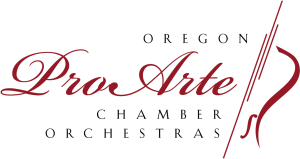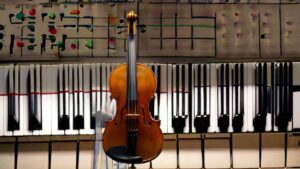When we talk about the blending of cultures in classical music, we’re diving into a world as vast and deep as the oceans that separate continents. This fusion isn’t just a matter of borrowing a tune or mimicking a rhythm. It’s about the heart and soul of vastly different traditions finding a common beat on the grand stage of orchestral music. From Eastern melodies that float through the Western scale to the bold marriage of time-honored techniques with avant-garde expressions, the symphony orchestra has become a melting pot of musical dialects.
East Meets West
Imagine the Silk Road, not as a trade route for spices and silk, but as a highway of harmonies and melodies, where East meets West in a dramatic interplay of sounds. Composers like Claude Debussy and Maurice Ravel were among the pioneers in weaving Eastern colors into Western canvases. Debussy’s fascination with the gamelan music of Java, encountered at the 1889 Paris Exposition, led him to craft compositions that shimmered with a new, impressionistic light, distinct from the heavier, more structured Western tradition.
Ravel, too, found inspiration in the oriental modes, which he infused into his compositions, giving them a unique flavor. This was not about appropriation, but rather an homage and blending of different musical philosophies. These composers showed that orchestration could transcend cultural boundaries, creating a soundscape that was both exotic and familiar.
The American Influence
Crossing the Atlantic, the influence of American music, particularly jazz and blues, on classical orchestration during the 20th century marked another pivotal point in the fusion of musical styles. Composers like George Gershwin and Leonard Bernstein took the essence of jazz – its syncopation, improvisation, and bluesy harmonies – and wove it into the fabric of classical music.
Gershwin’s “Rhapsody in Blue,” premiered in a concert hall with a full orchestra, was groundbreaking. It was a bold declaration that jazz, with all its swing and freedom, could converse fluently with the more formal, structured world of classical music. Bernstein, with works like “West Side Story,” blurred the lines even further, incorporating Latin rhythms and themes into a narrative that was as operatic as it was Broadway, proving that classical orchestration could adapt but thrive through the incorporation of contemporary and culturally diverse elements.
The Folk Revival
Turning the spotlight towards Europe, a different kind of fusion was taking place. Composers like Béla Bartók and Antonín Dvořák embarked on journeys back to their roots, collecting and studying folk tunes from their native lands and others. Bartók, with his deep love for Hungarian folk music, and Dvořák, with his New World Symphony, showed how the soulful melodies and rhythms of the common folk could enrich the symphonic tradition.
This wasn’t imitation but a deep integration of folk motifs and classical techniques that elevated simple melodies to monumental works. Through innovative orchestration, they preserved the essence of folk traditions while granting them a new, amplified voice within the concert hall.
Classical Meets Contemporary
Fast forward to the 21st century, and the fusion within classical orchestration has embraced digital technology and contemporary sounds. Composers like Max Richter and Ludovico Einaudi, with their minimalist approach, have incorporated electronic music elements, looping, and digital manipulation into their works, creating soundscapes that bridge the gap between the classical tradition and the infinite possibilities of the digital age.
This blending of old and new, of acoustic and electronic, is not just about creating a “cool” effect. It’s about expanding the emotional and expressive capabilities of orchestral music, making it relevant and resonant in today’s digital world. The fusion here is subtle yet profound, inviting listeners to explore the depths of sound in new and exciting ways.
The World Orchestra
Perhaps the most thrilling aspect of cultural fusion in classical orchestration today is the emergence of what could be called the “World Orchestra.” This concept transcends geographic and cultural boundaries, bringing together instruments, melodies, and rhythms from around the globe. Composers like Tan Dun have led the way, incorporating traditional Chinese instruments and melodies into symphonic works that celebrate the global heritage of humanity.
Tan Dun’s “Water Concerto” is a prime example, using the sounds of water in various containers to create a musical language that is universal. This approach to orchestration is not just about blending East and West but about creating a global dialogue that reflects our interconnected world. Through the universal language of music, the World Orchestra speaks of unity, diversity, and the shared human experience.
The Dance Continues
As we immerse ourselves in the experience of a symphony, opera, or concerto, it’s essential to delve deeper than the surface layer of melody and harmony. Beyond the intricate arrangement of notes and the virtuosic performances lies a narrative, a tapestry of human emotion and cultural heritage. Each piece of music acts as a conduit, channeling the essence of myriad cultures, epochs, and philosophies. The orchestration is a sophisticated fusion of worldviews, traditions, and expressions. This blending of cultural elements within the realms of classical music is not just an artistic choice but a powerful statement of unity and diversity. It serves as a poignant reminder that despite our myriad differences, there is a universal language of emotion and beauty that can connect us all. As listeners and aficionados of these musical art forms, we are invited to appreciate the aesthetic and technical achievements and to engage with the music on a deeper level. By doing so, we become more than passive observers; we embark on a rich, exploratory journey that transcends geographical and temporal boundaries. This journey of musical discovery enlightens us about the diverse world around us and reinforces the enduring power of classical music to speak to the human condition, fostering a sense of interconnectedness and shared humanity.

